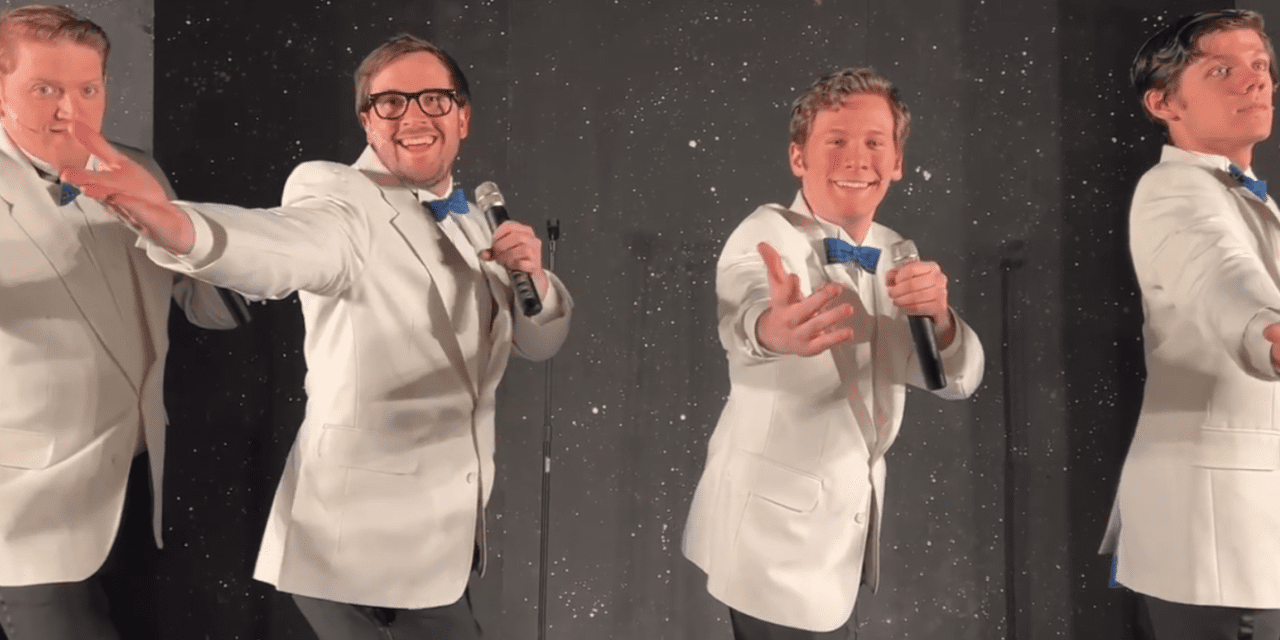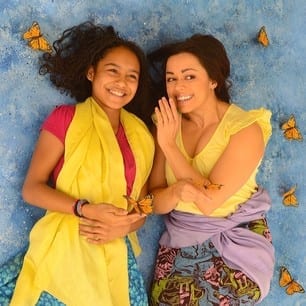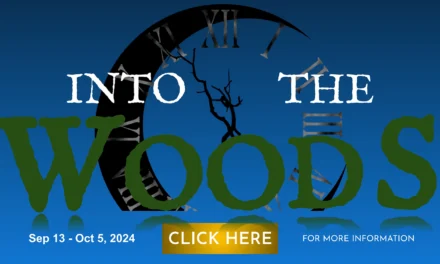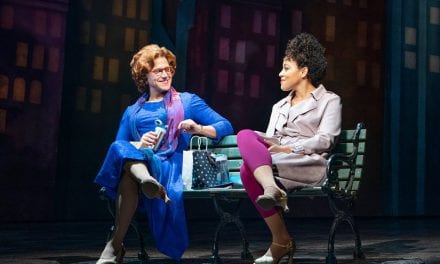BLUFFDALE — Is there an audience still for Forever Plaid? After all, the music from this jukebox musical is all over 50 years old, and the cultural touchstones it mentions, like Perry Como and The Ed Sullivan Show, are distant memories. Despite the decades, the Bluffdale Arts Advisory Board production of Forever Plaid shows that this jukebox musical can still come to life today.
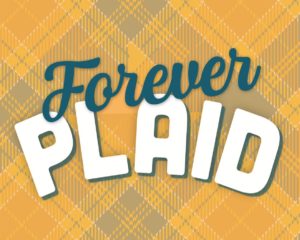
Show closes April 22, 2022.
Forever Plaid tells the story of the fictional doo-wop group, The Plaids. These four aspiring singers (named Jinx, Frankie, Sparky, and Smudge) were on their way to an important performance in 1964 when their car was hit by a bus full of schoolgirls. But their fate is not a total tragedy, because they get to perform their concert one last time in the afterlife. Thus, the audience gets to watch this bittersweet performance by four guys who missed their big break.
This production has two directors: Eric Peterson (who doubled as music director) and Kerry Severn (who also served as choreographer). Peterson and Kerry Severn’s direction is superb, especially in the way that segments of the show flowed seamlessly into one another. I also appreciated how the directors helped their each member of the cast create a distinct character. That individuality helped me get emotionally attached to the characters as the evening wore on. Kerry Severn’s choreography was particularly impressive; despite its simplicity, the dancing never felt repetitive or stale.
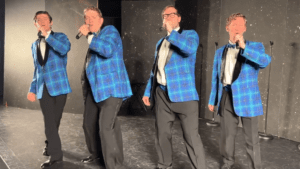
Left to right: Jacob Severn as Frankie, Cody Garrard as Jinx, Coy Christensen as Smudge, and Jared Severn as Sparky.
The four actors in Forever Plaid were well cast. Jared Severn looks like a 1950s matinee idol, and his debonair mannerisms and love of the spotlight made me believe that Sparky lived to perform. He can turn off Sparky’s “performance mode” when appropriate, and I found the scene where he reminisces with Jinx to be a tender moment that added to the show’s heart. As Frankie, Jacob Severn is confident as the leader of the group, and his performance in “Matilda” was the most fun of the entire evening. Coy Christensen played the nerdy Smudge, who brought sweetness to the show — when describing the character’s unfulfilled dream of recording an album — and passion (in “Rags to Riches”).
The last member of the cast, Cody Garrard, was charming as the perpetually nervous Jinx. Garrard took a risk in having his character mess up for laughs. In amateur productions, such “mistakes” often look like genuine errors. However, Garrard clearly knows his stuff, and his mishaps came across as comic relief and not genuine unpreparedness. (I apologize to Garrard for resisting when he tried to put a hat on my head during “Matilda.” I don’t like to engage in audience participation when I am reviewing a play. The moment did not seem to fluster Garrard, though, who carried on unfazed.)

Clockwise from top left: Jacob Severn as Frankie, Cody Garrard as Jinx, Jared Severn as Sparky, and Coy Christensen as Smudge.
The hardest part of Forever Plaid is the singing, and that is where the cast struggled the most. The singers were best in the crooning songs (like “Catch a Falling Star” and “Moments to Remember”), but long stretches of harmony were sometimes difficult for them (especially the ending chords of “No, Not Much” and the opening of “Scotland the Brave”). Most of the singing was pleasant, though, and all four gentlemen sing as a natural, cohesive quartet. Aiding them was Peterson at the piano and bassist Bill Geist, who both played flawlessly the entire evening.
The sound system did the most to hamper the show. Microphones cut in and out at unexpected times throughout the evening, and the sound was often unbalanced. The other technical aspects, though, were admirable. The set (designed by Laura Garner) was simple: black flats and a black stage, textured with spattered paint. But that simple black set allowed the actors to pop in their bleach-white dinner jackets they wore for most of the show. The lighting (designed by Julie Fox) was surprisingly effective, given that there were only 16 stage lights mounted on 4 lighting trees. The stage lights were bright enough to keep the set from looking like a black hole, and the oblique angle of the lights gave the show an appropriate concert feel. The shortcomings of the lighting were apparent, though, in “Heart and Soul,” parts of which were performed in the dark on the stage apron. And while the costumes of Forever Plaid (designed by Garner and Elizabeth Lines) are not complex, they were cute and appropriate. The men all wore matching plaid bow ties, cummerbunds, and pocket squares, and I was surprised to find that even their socks matched one another’s.
Like the last Bluffdale show I saw, Forever Plaid is an excellent choice for the company. With about five minutes left in the play, Sparky delivers a monologue where he states that The Plaids never got their big break, but that the small performances and venues they performed at were just as good as Madison Square Garden. It was touching to hear those words while sitting in an audience of 43 people in a venue that only had seating 84 people. Arts councils like Bluffdale’s may not be the big time, but for the people who pour their soul into performing for their family, friends, and neighbors, these productions matter just as much as a professional gig would. There is something of Jinx, Frankie, Sparky, and Smudge in many amateur actors, and I was happy to be part of a meaningful night for the cast of Forever Plaid.

These reviews are made possible by a grant from the Salt Lake County Zoo, Arts, and Parks program.

